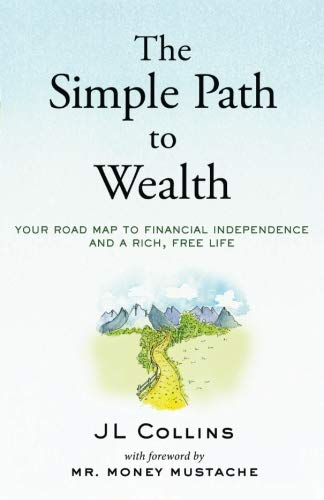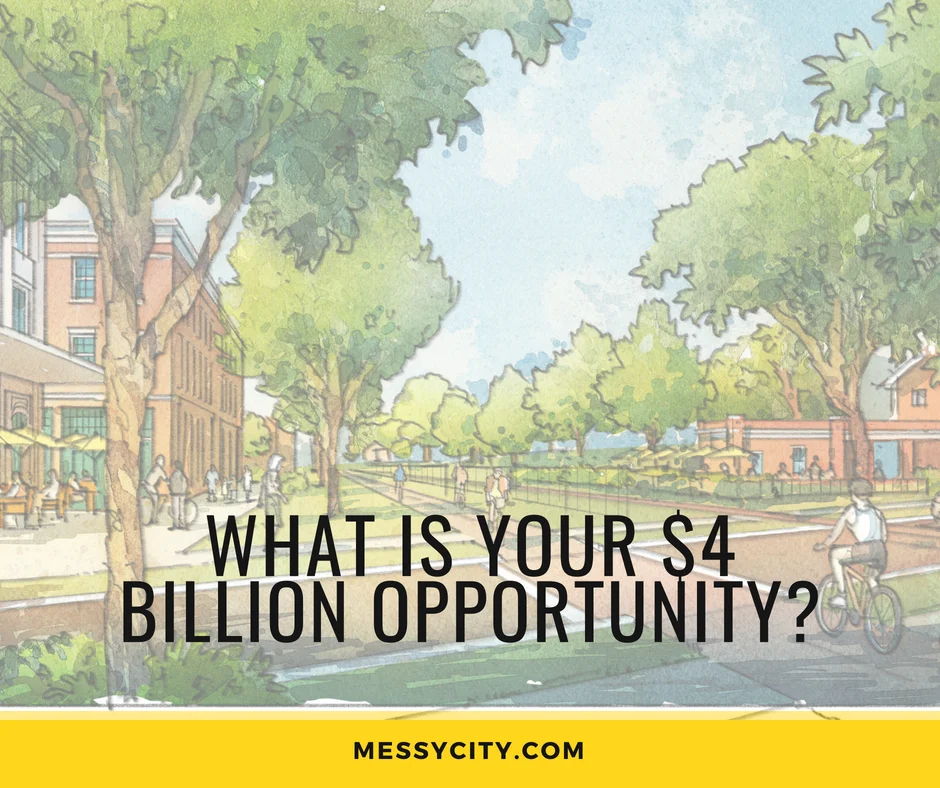What is your community's $4 billion opportunity?
The Downtown Savannah 2033 Master Plan, Part 2
Understanding our Flaws and Addictions
In case you missed it, Part 1 is here
Like many people, I’ve made my share of foolish financial decisions over the years. There's a regular segment on a podcast that I listen to called Choose FI where the host asks the guest, "What's the biggest financial mistake you've ever made?" I often laugh at that question, since I have no idea what my own answer would be. I've made many good decisions over the years, but there's also a pretty long list of foolish, impulsive or poorly-thought choices. I imagine most of us feel similarly.
As my own follies added up while getting older, I decided to become much more educated about finance, money and investing. Several years ago I fell down the rabbit hole of the Financial Independence movement. I've enjoyed and benefited from the diversion (and still do) but it revealed a true gap of knowledge in my own education. In fact, when people start getting real and talking about money (which we too often consider a taboo topic), we learn that many of us are working to overcome an education that was deficient regarding money and finance. Would it surprise anyone to learn that in five years of architecture school (<cough>, six in many of our cases), with nearly two hundred credit hours required, there wasn't a single accounting, finance or business class among the course roster? It’s really rather amazing, especially given how many architects end up hanging out their own shingle. At thirty years old, when I co-founded 180 Urban Design and Architecture in 2000 with my friend Brian Hendrickson, I found myself taking basic courses about reading financial statements. Talk about humbling.
Our communities are no different. That shouldn’t surprise us, since communities are just collections of fallible humans. We make mistakes and we learn. We try again. Most of our communities have very little real knowledge of their own financial condition other than the annual budget. Most have no idea what generates value or return on public investments, and nearly all of our cities are struggling with very serious long-term financial liabilities.
Talented, brilliant people like Joe Minicozzi and Chuck Marohn do remarkable work traveling the country, educating people and helping communities with the first phase of addiction recovery: awareness and doing the math. We unfortunately need treatment for multiple addictions that we continue to feed: unproductive debt, vanity projects, obscene spending on highways and big roads, and micro-managing our neighbors. All of them serve to put our communities at great risk financially, which in turn affects everyone's quality of life.
Jan Gehl speaking at CNU 26 in Savannah
Any sincere master planning effort brings those issues into full focus. It raises many questions, including some that simply cannot be answered in the course of one plan or project. There are those within the planning field that profess absolute certainty, and can sound very convincing on what exactly needs to be done. Often this comes from the safe and secure halls of academia, but it can also come from from someone with a product or service to sell. I've been working long enough now that I absolutely value expertise and the wisdom that comes from experience. But I also value a more humble approach towards the understanding of cities and towns. The work of Jan Gehl, as one example, encourages us to observe, learn, test and observe again. We must do so with our designs, and with an eye on the bottom line for our communities.
What can a plan in Savannah mean for you and for your city or town?
Beyond the lessons noted in Part 1, many of which are just good, time-tested approaches to planning, I wanted to share what I believe a plan like this can mean for cities everywhere, especially those that contain more than 80% of the US population.
Many of my friends and colleagues believe an incremental approach is best as communities transition to a better path, with a careful set of small steps. I largely agree with this. For twenty-five years, I’ve worked with clients to find multiple steps in year one after a plan adoption to show the public that you mean business. People need to see small steps to have faith in progress.
Looking backwards: While I love the convenience of my digital music, and am glad vinyl has made a comeback, I do miss the social experience that used to come with going to the record shop and listening to new music
But people also need big visions, and long-term plans. We need the context, so that we can make short-term moves and feel like we haven’t wasted our time and talents. We need to know what is possible, even if it’s not probable. Young people especially need to see exciting possibilities for their own futures. They’ll be around much longer than those of us in middle age (sidebar: there are many more of us than most people think), who at a certain point tend to look backwards as much as forward. If the only visions that young people get are techno-centric, that is what they will aspire to.
The blending of the possible and the practical is a critical step for all of us, in our lives and in our communities.
When we paint a vision, we can then be in a better position to ask hard questions about what it means for our finances and our lifestyles. I don't mean this to sound crass, but obviously if a local government isn't focused very clearly on finances then it can't deliver the services and wishes of its constituents. The bills have to be paid, and local governments have some very big bills.
JL Collins, in his landmark book The Simple Path to Wealth, gives this advice to individuals when thinking about their future:
- Think Long-term
- Live below your means (save ½ your income)
- Avoid debt
- Invest your savings in low-cost index funds (essentially an inexpensive, diversified portfolio)
- Ignore the news and your friends
I've thought for quite some time about how to translate this advice for cities and local governments, since I believe it to be so sound and easy to follow. Throughout this planning effort in Savannah, the notion kept creeping into my head. How can planners explain the act of planning and urban design, so that it helps build more financial sustainability and resilience? We obviously built that into our analysis on tax revenues, but what else? Knowing that we can't possibly anticipate every challenge or issue, how can you give a JL Collins lesson that can actually help places today and tomorrow? Here's my attempt (obviously much longer than 5 steps):
- Understand your own finances - do the math! Create P&L and balance sheet statements citywide and by neighborhood or district, then publish them so the public understands
- Think Long-term. Have a vision or plan that is compelling and actionable
- Set goals for your financial statements - i.e., when will you be able to replace all of your own infrastructure without help from others?
- Avoid risky or unproductive debt. Be very diligent about Return on Investment
- Use time-tested, diversified approaches that create value (like was noted in Part 1)
- Simple, connected street networks; great public space; slow traffic speeds; don’t prioritize commuting; have flexible, by-right zoning; encourage small lots as the default; understand your own DNA; build beautifully - it matters.
- Limit your big risks to a very small percentage of your finances
- Implement and adjust your simple plan as time goes on
- Celebrate small victories together
- Find a method to hold staff and electeds accountable to LONG TERM goals. Right now all of the incentives are for short-term goals.
- Don’t get caught up in the latest trendy thing from New York (we need a high line!)
If you have specific feedback on this notion, please comment or email me. I'm interested in refining this further.
The notion of financial independence for individuals is compelling and has caught fire in recent years, especially among those of my generation and younger. There's an explosion of websites and podcasts available for anyone willing to learn. I hope the new interest in urbanism and doing the math leads to a similar wave for our local governments. For cities, financial independence as a concept obviously will be different. For one, cities aren't looking to turn a profit and then just stop working one day. But what financial independence can mean is that a city can afford to provide the necessary services, including funding retirement accounts, AND repair/replace its infrastructure without help from others. Can your community do that? Do you need the state or the feds to do basic maintenance or make repairs? If you answer yes (as I imagine most places do), you are vulnerable to economic shocks. That is actually dependency, not independence.
I write this knowing that the idea of tying urban design and planning to a community's financial independence is a niche notion for now. Maybe 5 or 10% of cities will have the courage and tenacity to embrace this. It takes people that know themselves and their goals well, and are willing to be collaborative. It takes people looking forward, not backwards. It's hard work, and not for everyone. But those that do, will put themselves in a better position to thrive and enjoy a high quality of life.
Messy Cities
This site is devoted to something I like to call messy cities. This article and the previous one would seem to indicate that the way to create them is through concerted, top-down planning efforts. In fact, I am a big proponent of balance. We need smart, well-done plans from our institutions. Those plans are best guided by a series of clear, time-tested principles instead of rigid policy formulas. But we also need broad leeway for people and businesses to live their lives and pursue their dreams without being stifled. In our modern-day planning and zoning regimes, unfortunately we have far too much stifling.
A community will never see the kind of wealth creation espoused here, nor successful implementation of a plan, by micro-managing every development application and every business. Business cycles simply move too quickly, and people will move on to another place or sometimes just give up.
Diversity in the built environment and in a city is a critical component of long-term success. Allowing the broadest possible swath of solutions is equivalent to investing in the index. Allowing only large (apartment, office, hotel - you name it) buildings is like betting it all on one company in the market. When we make our implementation mechanisms (like zoning) so complex that it requires an army of consultants to get through the process, we effectively eliminate diversity.
So plan intelligently, yes. Please do so. But don’t give in to the impulse to try and control everything, either from local government or from the porch of the neighborhood NIMBY’s. Cities need to be messy to thrive, to be sustainable, to be equitable and to be interesting for humans.
If you are interested in exploring this more with K2 Urban Design, here are three ways:
- Email me with questions or comments
- Invite me to speak to your group or in your community
- Contact me about urban design and planning services.
If you got value from this post, please consider the following:
- Sign up for my email list
- Like The Messy City Facebook Page
- Follow me on Twitter
- Invite or refer me to come speak
- Check out my urban design services page
- Tell a friend or colleague about this site





